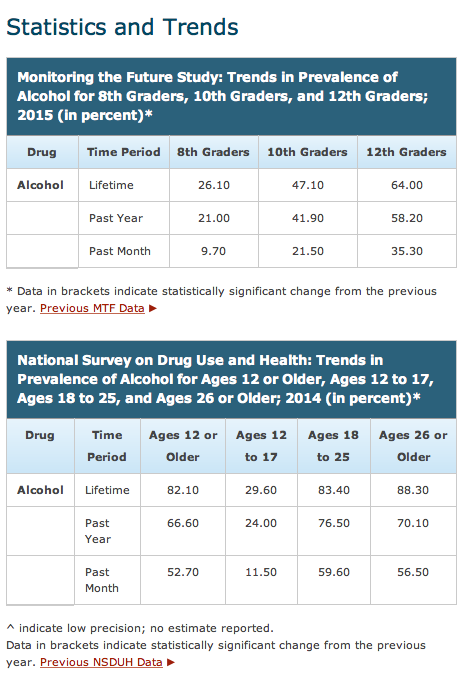assessing drug harms and drug facts
From the National Institute on Drug Abuse website: https://www.drugabuse.gov/drugs-abuse/alcohol

Alcohol
Brief Description
Ethyl alcohol, or ethanol, is an intoxicating ingredient found in beer, wine, and liquor. Alcohol is produced by the fermentation of yeast, sugars, and starches. It is a central nervous system depressant that is rapidly absorbed from the stomach and small intestine into the bloodstream. A standard drink equals 0.6 ounces of pure ethanol, or 12 ounces of beer; 8 ounces of malt liquor; 5 ounces of wine; or 1.5 ounces (a "shot") of 80-proof distilled spirits or liquor (e.g., gin, rum, vodka, or whiskey). NIDA does not conduct research on alcohol; for more information, please visit the National Institute on Alcohol Abuse and Alcoholism (NIAAA), the Substance Abuse and Mental Health Services Administration, and the Centers for Disease Control (CDC).
Effects
Alcohol affects every organ in the drinker's body and can damage a developing fetus. Intoxication can impair brain function and motor skills; heavy use can increase risk of certain cancers, stroke, and liver disease. Alcoholism or alcohol dependence is a diagnosable disease characterized by a strong craving for alcohol, and/or continued use despite harm or personal injury. Alcohol abuse, which can lead to alcoholism, is a pattern of drinking that results in harm to one's health, interpersonal relationships, or ability to work.

Charts here: https://www.drugabuse.gov/drugs-abuse/alcohol